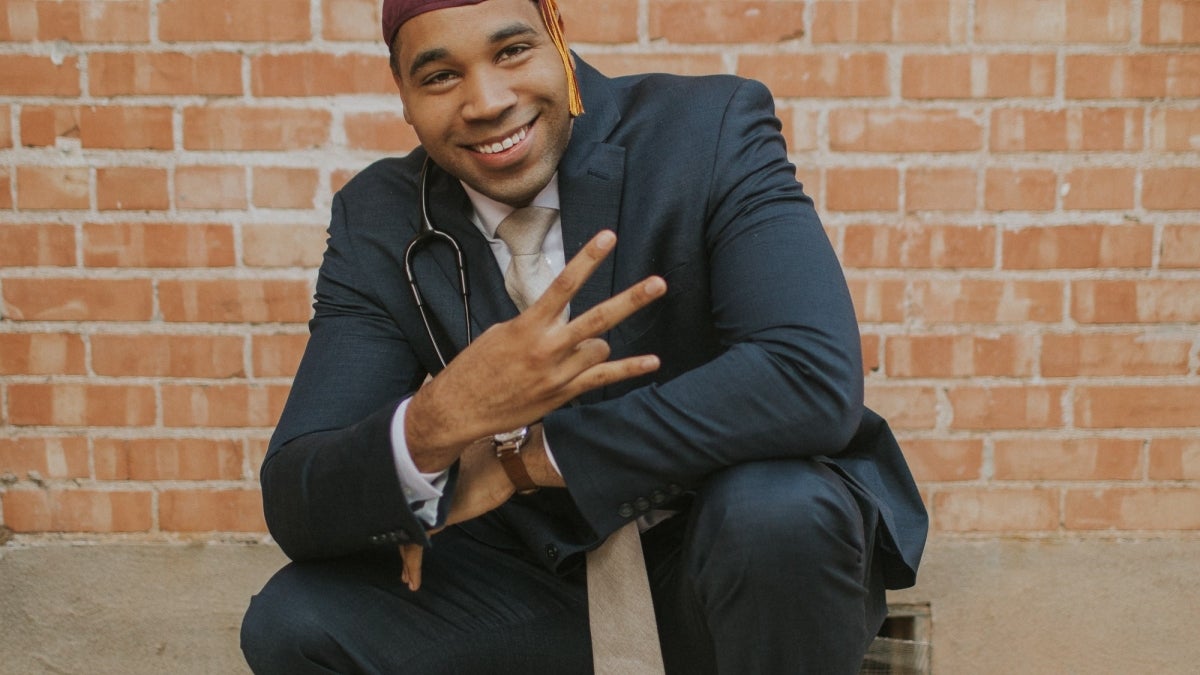Editor’s note: This is part of a series of profiles for fall 2017 commencement. See more graduates here.
Shaun Collins was sitting in an intro to biology class at Arizona State University when it hit him.
Small things that cause problems in the larger world fascinated him. He switched to a microbiology major with the School of Life Sciences and now, after he graduates this December from ASU, he is headed to medical school.
The Las Vegas native talked about how ASU changed his life.
Question: Why did you choose your major?
Answer: I chose my major because I felt like it would give me a solid foundation since I planned on applying to medical school.
Q: What was your “aha” moment, when you realized you wanted to study the field you majored in?
A: I realized I wanted to study microbiology when I was in an intro bio class. I realized the things that fascinated me most in that class were the small things that you can't see with your naked eye, yet they cause a ton of real-world problems! So from there, I wanted to learn more about it, so I switched my degree to microbiology.
Q: What’s something you learned while at ASU — in the classroom or otherwise — that surprised you, that changed your perspective?
A: While taking this HIV/AIDS class I've learned so much about the virus and disease. It has opened my eyes to how much stigma exists toward people who have contracted it. This class has completely changed my perspective on the whole epidemic and has ignited a fire in me that makes me want to help.
Q: Why did you choose ASU?
A: The previous university I was attending did not have a great biology department, and I wanted to attend a school with a better department. I chose ASU because of all the resources it has to offer. Between its top-notch professors and labs, to all the tutoring and learning resources, to the 24-hour library, they all played a crucial role in me choosing ASU.
Q: What’s the best piece of advice you’d give to those still in school?
A: Even when it gets hard, because it definitely will, just know thousands went through it before you and thousands will after. If they all can do it, you can too. Just keep going.
Q: What was your favorite spot on campus, whether for studying, meeting friends or just thinking about life?
A: Hayden library, or as we call it "Club Hayden," was definitely my favorite spot on campus. From spending countless nights pulling "all-nighters" and taking turns napping, to all the randomness you would see going on at 3 a.m. there. Definitely some good times.
Q: What are your plans after graduation?
A: I recently got accepted to medical school in Arkansas! So, after graduation, I'll be enjoying my seven months off hopefully just working and traveling (Thailand is calling my name) until school starts again in July.
Q: If someone gave you $40 million to solve one problem on our planet, what would you tackle?
A: I would donate to various inner-city schools to help improve these education systems. I believe an adequate education is a right that should be provided to everyone, so being able to impact that in some way would mean a great deal.
More Science and technology

ASU postdoctoral researcher leads initiative to support graduate student mental health
Olivia Davis had firsthand experience with anxiety and OCD before she entered grad school. Then, during the pandemic and as a result of the growing pressures of the graduate school environment, she…

ASU graduate student researching interplay between family dynamics, ADHD
The symptoms of attention deficit hyperactivity disorder (ADHD) — which include daydreaming, making careless mistakes or taking risks, having a hard time resisting temptation, difficulty getting…

Will this antibiotic work? ASU scientists develop rapid bacterial tests
Bacteria multiply at an astonishing rate, sometimes doubling in number in under four minutes. Imagine a doctor faced with a patient showing severe signs of infection. As they sift through test…
